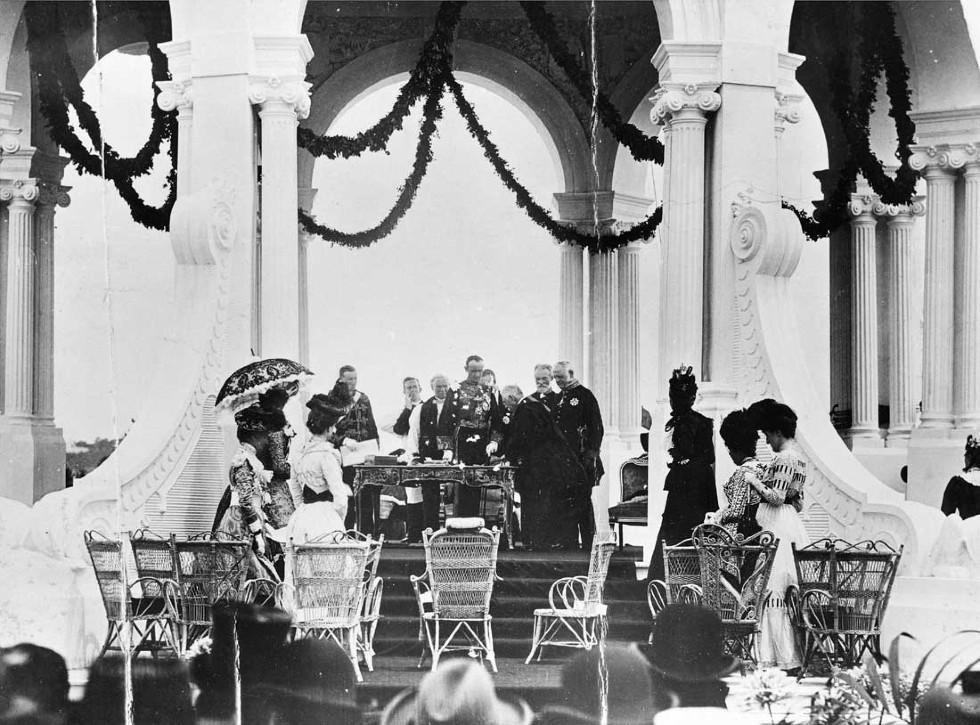
Photograph of the Governor-General, Lord Hopetoun, taking his oath of office
Aboriginal and Torres Strait Islander people should be aware that the National Archives' website and collection contain the names, images and voices of people who have died.
Some records include terms and views that are not appropriate today. They reflect the period in which they were created and are not the views of the National Archives.


Photograph of the Governor-General, Lord Hopetoun, taking his oath of office
This is a photograph of Australia’s first Governor-General, Lord Hopetoun, taking his oath of office at the Inauguration of the Commonwealth in the Federation Pavilion at Centennial Park, Sydney, New South Wales, on 1 January 1901. Next to him are Edmund Barton and the other members of Australia’s first federal ministry.
Queen Victoria signed her assent to the Commonwealth of Australia Constitution Act 1900 in July 1900, providing the blueprint for the federation of the 6 Australian colonies into one nation. She appointed Lord Hopetoun as her representative.
A ceremony for the Inauguration of the Commonwealth was held at Centennial Park, Sydney, on 1 January 1901. It was attended by nearly 8000 guests, 10,000 schoolchildren, a 1000-voice choir and more than 100,000 spectators.
Members of Australia's first federal ministry were sworn in and Lord Hopetoun took his oath of office. Edmund Barton became Australia's first prime minister. Four of the colonial premiers – George Turner, Victoria; William Lyne, New South Wales; John Forrest, Western Australia; and Neil Lewis, Tasmania – joined the temporary first Cabinet, awaiting the first federal election on 20 March 1901.
The centrepiece of the ceremony was the table that Queen Victoria had used when signing her Royal Assent to the Commonwealth of Australia Constitution Act. Upon signing, she had presented a duplicate of the document, together with the pen, inkstand and table used during the signing ceremony, to Edmund Barton to take back to Australia. Today, the table is kept in Parliament House in Canberra. The duplicate document is cared for by the National Archives of Australia.
Despite their presence at the inauguration, women did not actively participate in the ceremony. The rights and powers that came into effect were primarily granted to white men. Only women in South Australia and Western Australia (including some Aboriginal women) were able to vote in the first federal election, as they were previously allowed to vote in state elections. All white women in Australia (and some Aboriginal women) gained the right to vote with the Commonwealth Franchise Act in 1902. It was not until 1962 that all First Australians were granted the right to vote in federal elections.
Learning resource text © Education Services Australia Limited and the National Archives of Australia 2010.
Learn how to interpret primary sources, use our collection and more.
